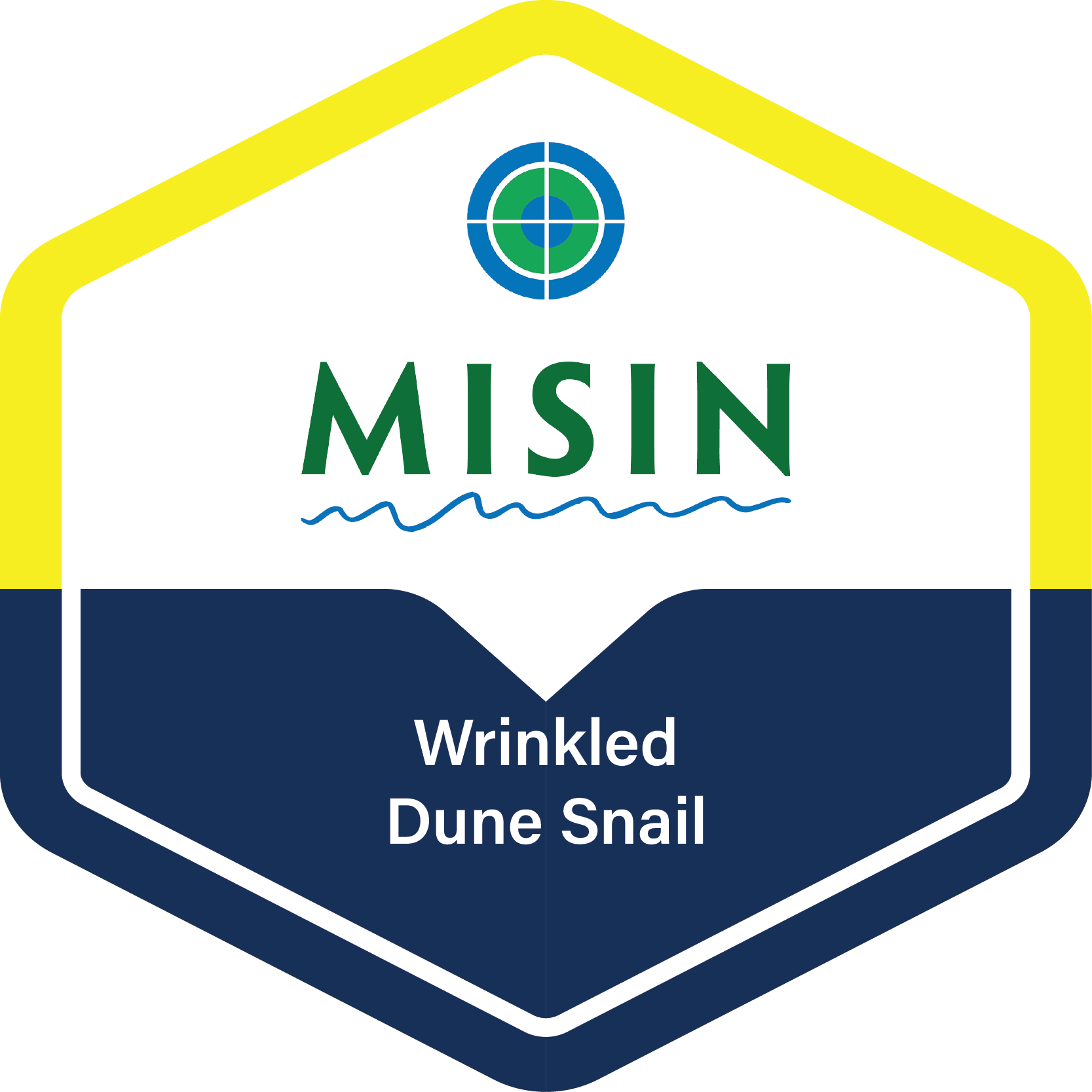Wrinkled dune snail (Candidula intersecta)
 Description: Several pathways for invasion exist. Some examples include hitchhiking.
Description: Several pathways for invasion exist. Some examples include hitchhiking.Identification: Shell is pale white or yellow with brown spots or bands. Body is often pale-yellow or blue-gray. Shell size varies from 7-13 mm long and 5-8 mm high.
Habitat: Native to Western Europe. Found in dry, open areas such as pastures and coastal plains.
Reproduction: Hermaphrodite. Usually mate and lay eggs in the autumn as conditions are getting cooler and wetter. In temperate climates, the egg stage can be the overwintering period in the life cycle of land snails.
Impact and Damage: This species of snail will damage fruit crops while still attached to the tree, which may allow for secondary infections that can kill the tree. They also have a high propensity to aggregate on cereal grains. This poses a threat of contamination and of secondary infestation by fungal pathogens that make the grain toxic. They are difficult to manage because they are able to survive cultivation in field cropping systems.
Monitoring and rapid response: Chemical control (carbamates, metal chelates and metaldehyde); reduction of habitat, field burning, and crop rotation. Small mammals, reptiles, amphibians and birds feed on land snails and might help in reduction of a population. Credits: The information provided in this factsheet was gathered from the Michigan Department of Natural Resources and CABI, Invasive Species Compendium.
Individual species images that appear with a number in a black box are courtesy of the Bugwood.org network (http://www.invasive.org). Individual photo author credits may not be included due to the small display size of the images and subsequent difficulty of reading the provided text. All other images appear courtesy of Google (http://images.google.com).
Common Name: | Wrinkled dune snail |
Scientific Name: | Candidula intersecta |
Family: | Hygromiidae (Leaf snail) |
Habit: | Mollusks |
 View Species Course |
|
